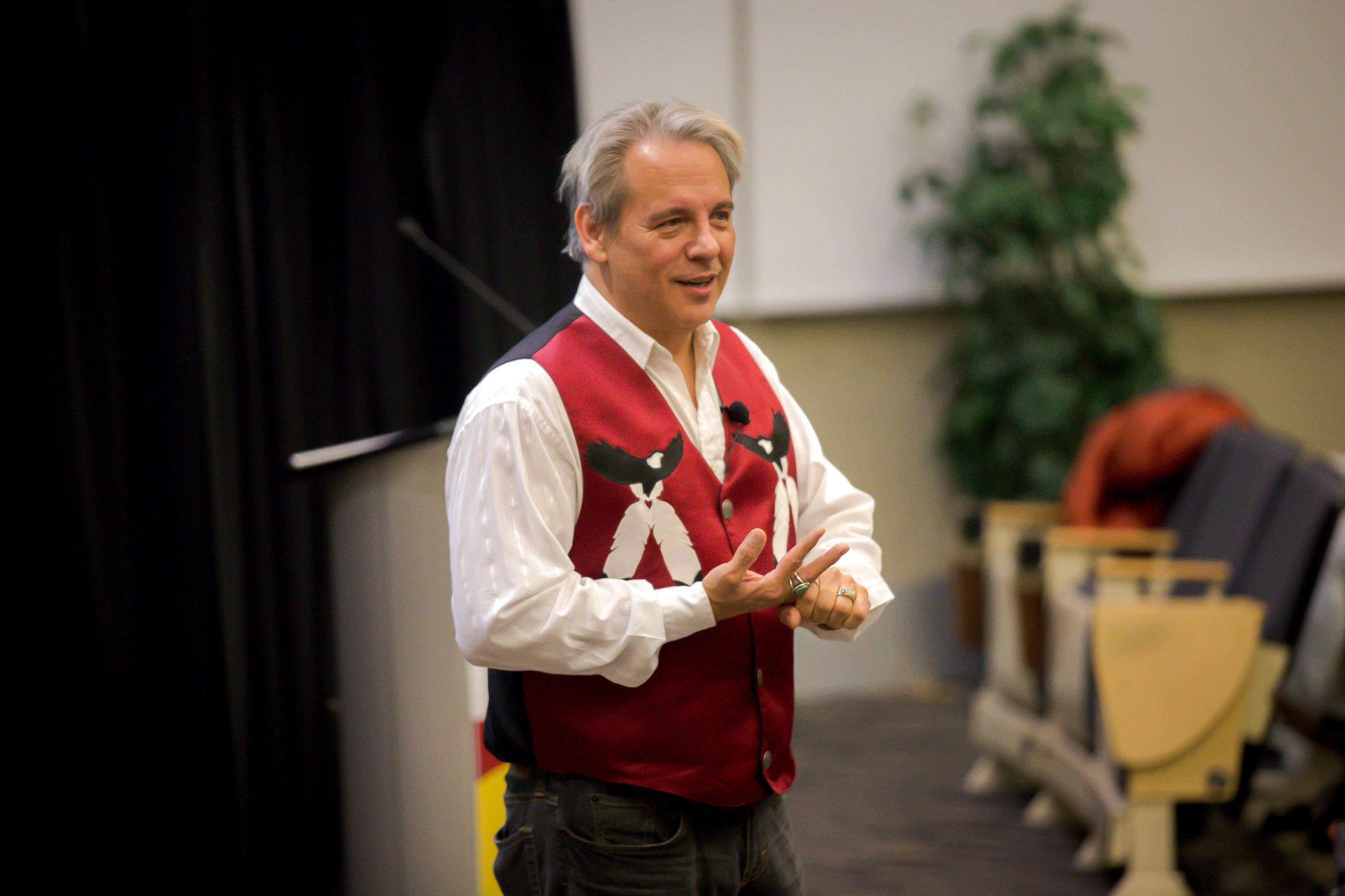
“Why do you want to be a writer? It’s not going to get you anywhere.” These were the words that flowed from mother to her son, Drew Hayden Taylor.
For those who don’t know, Drew is now an accomplished author, playwright and novelist, and in addition to expanding his mother’s views on writing, he travels around the country doing the same for audiences interested in storytelling. His latest gig brought him here to the U of A, where I saw him give a lecture — part inspirational speech and part off-the-cuff comedy — titled “The Changing Face of Storytelling in the Indigenous 21st World!” at the Lougheed College Lectures.
Whether you’re a communicator like me, a student looking to share your story, a professor looking to reach your students, or a researcher who wants to share your latest findings with the public, storytelling is something that we all do.
Here are a few takeaways from Drew’s talk that we can all incorporate when telling our stories:
Having found success writing TV episodes, plays and novels, Drew is now a prolific role model for any aspiring author, but he didn’t get there overnight. He has some tips for writers that also show how any journey can be broken into small steps:
Observe until you’re ready for the next step
Before Drew believed he could write full-time, he took on supporting positions for television, learning by observation until he was prepared to step up.
Master the structure
He says that 60% of anything he writes is structural, so by first mastering the structure, he has since saved time when writing.
Let your childhood fascination fuel you
When playwriting, Drew is driven by the childhood memories he has of his family’s campfire story telling.
Don’t be afraid to reach.
When Drew decided to make the leap from short stories to novels, he said that it felt like he had taken on the task of jumping from a 3,000 foot walk to a 50,000 foot vertical hike. It was daunting, but accepting the challenge was far more rewarding than letting the fear of the challenge ground him.

Drew’s presentation was filled with humour, which he said has been called the “WD40 of healing.” He explained that comedy is a cornerstone of native storytelling that can be used to make any narrative message more memorable. If you can remember a punchline, chances are that so will your students, especially if it includes a key fact that you’d like them to remember for their next exam.
Drew stayed true to his culture and tenaciously found grants and opportunities so that he could make a living from his passions and prove his naysayers (including his mom) wrong. When it comes to storytelling, Drew encouraged us to seek the possible in the impossible, which seems like a good way to approach any communication effort; start with the goals you know you can attain and build out your messaging from there.
The lecture can be viewed in its entirety on the Lougheed College Lectures website.Lougheed College Lectures website.
Shelby MacLeod — Communication Coordinator, Peter Lougheed Leadership College

Shelby MacLeod lives vicariously through UAlberta students as she shares the stories of Peter Lougheed Leadership College scholars. While she is always up for a challenge — like walking the long stairwell at University Station every morning — her job bragging about PLLC scholars is pretty straightforward!